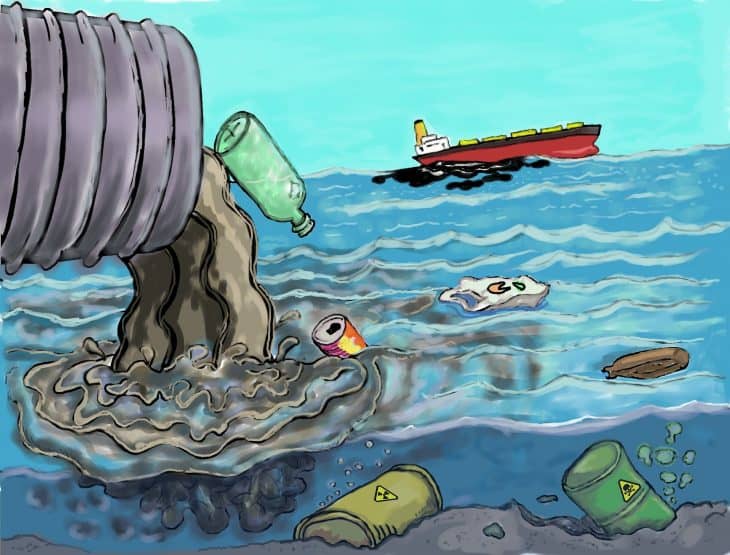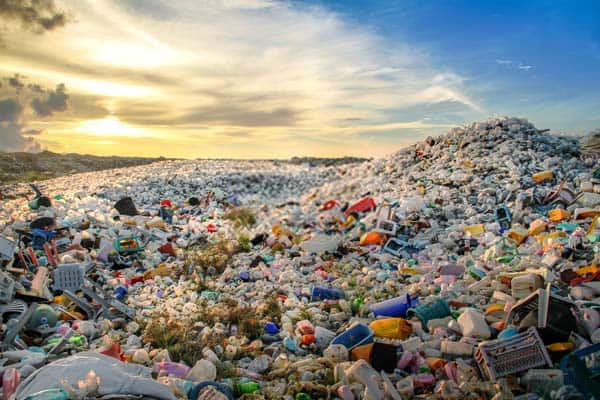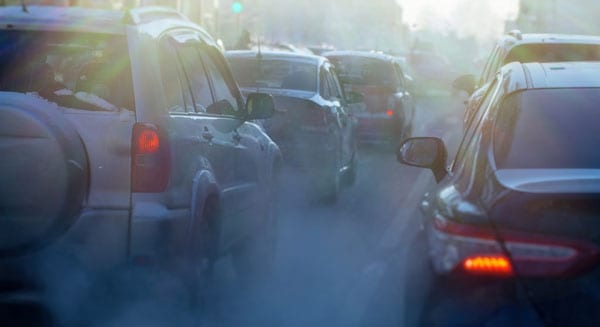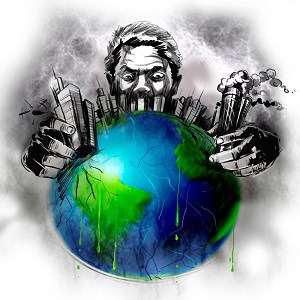
- Definition: Contamination of air, water and soil
- Types: 7 types – most common are air, water and land pollution
- Effects: Climate change, global warming, death
- Sources: Cars, factories, garbage
- Contributors: US is responsible for 30%
- Cost: Water pollution alone costs $12.8 billion a year
- Deaths: Over 5,000 people die a day from polluted water
- Most Polluted City: Linfen, China
- Cleanest City: Calgary, Canada
- Solutions: Individual responsibility, energy conservation, public transportation
- Types: There Are 7 Types of Pollution
- Air: Air Pollution Kills Millions Every Year
- Land: Land Pollution Is Ugly
- Light: Light Pollution Prevents Us Seeing the Stars
- Noise: Noise Pollution May Be Causing Your Stress
- Thermal: Thermal Pollution Keeps You Running Your Air Conditioning
- Visual: Visual Pollution Is Controversial
- Effects: Water Pollution Kills Thousands Every Day
- Effects: Global Warming Is a Dangerous Result of Pollution
- Prevention: You Can Help Stop Pollution Today
- The United States Produces the Most Pollution
- Our Weather Is Affected By Pollution
- Driving in Traffic Is Bad for Your Lungs
- You Are Eating Insecticides for Nothing
- Russia Improperly Disposed of Chemicals and Is Paying the Price
There Are 7 Types of Pollution
The first of our pollution facts might surprise you. While most of us know that the air, land and sea can be polluted, many don’t know about the other types of pollution that affect the globe. The seven types of pollution are air, land, light, noise, thermal, visual, and water. All types of pollution are caused by humans, and are dangerous to our health and future. There are plenty of ways to prevent pollution and save the environment, which pollution facts will explore.
Air Pollution Kills Millions Every Year
Air pollution is the result of smoke and harmful gases filling the air that we breathe. These gases are the results of vehicle exhaust fumes, the burning of fossil fuels (coal, oil and gas), harmful off-gassing from paint and plastic production, and radiation spills or nuclear accidents. Air pollution is linked to health conditions like allergies, asthma and respiratory illnesses, all of which have been becoming more common each year.
Land Pollution Is Ugly

Pollution facts tell us that land pollution is simply the debris left on the Earth’s surface by human activity. This includes litter found on the side of the highway, the use of chemical filled pesticides, damage caused from logging practices, nuclear accidents, illegal dumping, and oil spills that happen inland. The visual site of land pollution is far from attractive but has unfortunately become all too common.
Light Pollution Prevents Us Seeing the Stars
Light pollution is the reason that the night skin has brightened up in such a way that we are unable to see the stars and planets as well as we once could. Causes of light pollution include street lamps that shine in multiple directions, extra lights that are left on when they don’t need to be at home, and cities that are forced to run lights all night long. Light pollution is a double-edged sword because it also uses up more energy and requires the use of more fossil fuels, leading to more air pollution.
Noise Pollution May Be Causing Your Stress
Noise pollution is simply any excessive noise that is either harmful or annoying to humans and animals. These noises include airplanes flying overhead and cars driving by, construction and building noises, and even fun events, like concerts and sporting events. These noises can be disruptive to humans, affecting our stress levels. Some studies suggest that the noise may even be harmful to unborn babies. Animals are affected as well, as these noises can cause them nervousness and can make it difficult to hear either their prey or their predators.
Thermal Pollution Keeps You Running Your Air Conditioning
One of the lesser-known pollution facts concerns thermal pollution. Thermal pollution is the increase of temperature caused by human activity. An example of this includes warming lake water, which happens when factories use cool water from a lake to cool their plant and then pump the now warm water back into the lake. Cities also add to thermal pollution because of their concentration of concrete and vehicles. This type of pollution causes aquatic life to suffer and even die. It also affects plant-life.
Visual Pollution Is Controversial
Visual pollution includes anything that would be considered unattractive or visually damaging. What actually counts as visual pollution is debated, because art is different to different people. Skyscrapers are classified as visual pollution because they block the natural view but, to some, skyscrapers are a work of art. Other types of visual pollution include graffiti, carvings on trees, billboards, abandoned homes and junkyards. While billboards may not be doing harm to someone medically, they do take away from the peaceful scenery that once stood in their place.
Water Pollution Kills Thousands Every Day

One of the most upsetting pollution facts tells us that water pollution is responsible for thousands of deaths each day. It is argued to be the most dangerous type of pollution. It includes raw sewage running into lakes, industrial waste spills that contaminate bodies of water, radiation spills, illegal dumping of garbage into lakes, bacterial growth in bodies of water, and farm runoff into nearby bodies of water. Contaminated drinking water can cause a laundry list of problems, the most serious being death. In countries that lack sufficient water cleaning facilities, death from contaminated water is a common occurrence.
Global Warming Is a Dangerous Result of Pollution
Carbon dioxide and other gases are collecting in the atmosphere as air pollution. These gases act like a blanket that traps in the sun’s heat, causing the planet to warm up. Over the past 50 years, the average global temperate has increased at the fastest rate in recorded history. The 10 hottest years on record have all occurred since 1990. Some immediate effects of these warmer temperatures include wildfires, drought and floods. Winter seasons are shorter, which can throw off complicated balances in animal and plant life. As the oceans heat up, stronger hurricanes and storms are able to form. Air pollution is a direct cause of global warming, which has a domino effect on every part of life.
You Can Help Stop Pollution Today
According to pollution facts, the easiest way to slow down the pollution of our planet involves individual responsibility. This means that, as an individual, you need to take the proper steps to reducing your waste and finding smarter ways to use resources. This could be using public modes of transportation instead of traveling by car, conserving energy by switching off lights, recycling everything that you can, looking into alternative sources of energy (wind and solar), and using energy efficient devices. New appliances are able to consume less electricity, reduce electricity bills, and help to reduce pollution.
The United States Produces the Most Pollution
The United States produces 30% of the world’s waste and uses 25% of the world’s natural resources. Nearly 50% of lakes in the United States are extremely polluted and are not recommended for swimming or fishing. The average American produces 4 pounds of garbage every day. Around 50 billion bottles of water are bought in America annually, but only 13% are recycled each year.
Our Weather Is Affected By Pollution
It takes only 5 days for a jet stream in China to carry air pollution to the United States, which can alter the weather for the entire country. Weather and natural disasters also have an effect on the globe. The tsunami that occurred in 2011 in Japan created a line of debris that stretched for 70 miles, filled with cars, plastic, bodies and radioactive waste.
Driving in Traffic Is Bad for Your Lungs

When driving through large cities, especially during high traffic hours, the pollutants in the air can seep into your car. This makes the air inside the car up to 10 times more polluted as the outside air. Many keep their windows closed when they are in traffic because they think they are saving themselves from the neighboring cars’ fumes, but it may actually be safer to sit in traffic with an open window.
You Are Eating Insecticides for Nothing
Insecticides are a known contributor to air pollution and are also believed by many to be unsafe for consumption. However, in the United States insecticides are used on corn by farmers throughout the country. A lesser-known fact though is that the use of 80% of insecticides could be avoided if the corn crop was rotated for a year with any other crop, as the type of pest that the chemicals are deterring would be naturally avoided this way.
Russia Improperly Disposed of Chemicals and Is Paying the Price
Between 1930 and 1938, nearly 300,000 tons of chemical waste was improperly disposed of in Dzershinsk, Russia from a Cold War chemicals manufacturing site. The toxic levels measured at 17 million times the safe limit. In 2003, the death rate of the city exceeded the birth rate by 260%. In Rudnaya Pristan, Russia, lead contamination has resulted in child blood levels that are 8 to 20 times higher than the levels allowed in the United States.
Pollution Facts – Facts about Pollution Summary
 Pollution facts show us how serious this global epidemic is. The facts explain all of the different types of pollution, what causes them, and the effects that they have on the environment. Ways of preventing pollution are also discussed in pollution facts that may help to slow down and maybe even stop pollution.
Pollution facts show us how serious this global epidemic is. The facts explain all of the different types of pollution, what causes them, and the effects that they have on the environment. Ways of preventing pollution are also discussed in pollution facts that may help to slow down and maybe even stop pollution.
Was this page helpful?
Our commitment to delivering trustworthy and engaging content is at the heart of what we do. Each fact on our site is contributed by real users like you, bringing a wealth of diverse insights and information. To ensure the highest standards of accuracy and reliability, our dedicated editors meticulously review each submission. This process guarantees that the facts we share are not only fascinating but also credible. Trust in our commitment to quality and authenticity as you explore and learn with us.
